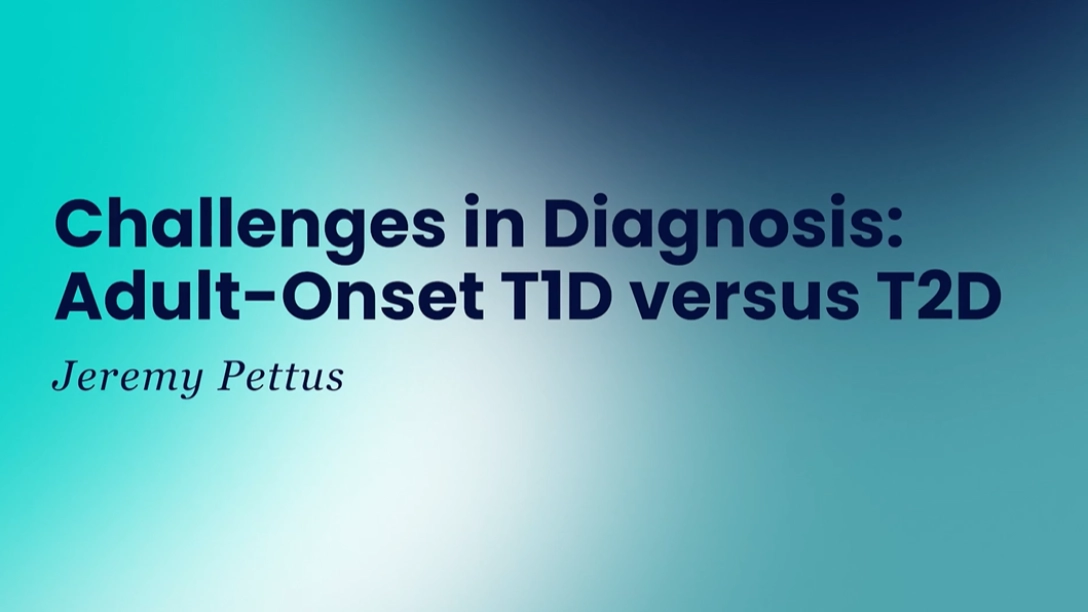- Resource
- BR1DGE
- Disease Burden
- Early Detection
- Video
Challenges in Diagnosis: Adult-Onset T1D versus T2D
Dr Jeremy Pettus highlights key challenges when identifying adult-onset T1D versus T2D, which can lead to frustration and ineffective management.
Learning Objectives
- Highlight the prevalence and differentiating clinical characteristics of adult-onset T1D versus T2D
- Educate on the burden and misdiagnosis of adult-onset T1D

Summary
Most people with type 1 are diagnosed as adults. We're so classically trained to think about type 1 as the healthy four-year-old skinny kid running around, and type 2 is on the other side, with the sixty-year-old obese kind of individual. The truth is there's a spectrum, a very grey area. That can lead to a lot of problems when somebody walks into their clinician's office and they might be 40 or 50 years old; they're frequently stamped automatically as having type 2 diabetes, and this diagnosis is missed. I would say it's kind of the most common misdiagnosis in endocrinology, but especially in diabetes. We get these people all the time. This leads to a lot of frustration that if you see these patients, these are the people that come to you and say “gosh, for five years I was told that I had type 2 diabetes, and they put me on metformin and that didn't work. And my doctor yelled at me that I wasn't taking my medication.” They're angry, that they haven't been diagnosed. That's years that they've had high blood sugars. So, we need to be more aware that just because somebody is an adult, it doesn't mean it's automatically type 2. We must have our antenna up when something might smell actually more like type 1 diabetes.
MAT-GLB-2501741-1.0 – 05/2025.
